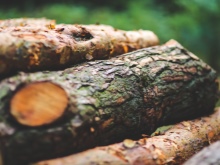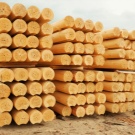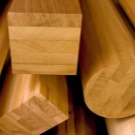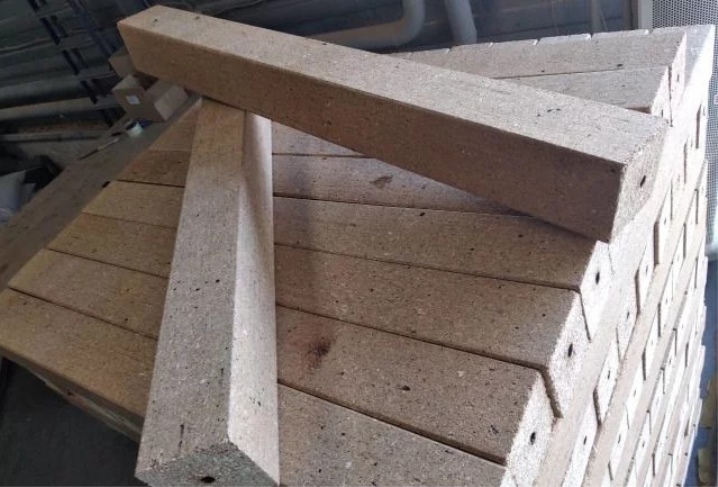All about wood materials

Wood materials, in the form of thin leaves and slabs, are considered a popular option for use in the construction and decoration of buildings and structures. They are quite diverse in their dimensional parameters, strength, appearance, but they are always based on natural components. To understand what it is, which sheet wood is environmentally friendly, an overview of the various options for such products will help.

What it is?
Wood-based materials are a type of product obtained from the processing of natural base. They can have a constructional, ornamental, heat-insulating purpose. Natural wood always acts as a basis, subject to mechanical stress or the influence of physicochemical processing methods. In terms of their properties, the materials of this group are superior to their untreated natural counterparts. They are more resistant to operational loads.
Wood-based materials have obvious advantages:
- wide size range;
- aesthetic benefits;
- ease of installation;
- resistance to environmental influences;
- the possibility of additional processing.



TO disadvantages can be attributed to the relative environmental safety - in the manufacture of some pressed products in the plates used adhesives on the basis of phenol-formaldehyde. In addition, in terms of moisture resistance, wood materials are sometimes also inferior to solid wood.
In the absence of fire retardant impregnation, they are flammable, prone to the development of rot and mold, and attract insects.



Primary requirements
Wood-based materials must meet a certain number of requirements. In their manufacture, it is permissible to use coniferous and deciduous species of plants, as well as waste of their harvesting, processing. In addition, non-wood inclusions can be used: resinous, adhesive on a natural basis, vinyl and other polymers, paper.
For gluing blanks, the following methods can be used:
- on a toothed spike in length;
- on a mustache in width;
- on a smooth joint in both planes.
All other requirements are not general, but individual in nature, since they vary depending on the type and purpose of the material.


Species overview
The classification of wood-based materials is quite extensive and diverse. Some of them are obtained by processing waste obtained during sawing, planing, and the use of other methods of mechanical processing of natural massif. Since the raw material is wood, conventionally all such products are environmentally friendly. But this is not always true, since such properties may not be possessed by the connecting components included in sheet and plate elements during production.
Wood-construction materials are most often used where wall, floor, and ceiling cladding is required. Plywood is made on the basis of multilayer veneer sheets. Building boards (MDF) are obtained from the fiber obtained in the course of grinding waste. Particle panels are also made in the form of thin sheets. The materials for the manufacture of which chips are used are called OSB - they also include the OSB marking used abroad.



Natural
This category is the most extensive.It presents timber and lumber that have undergone various methods of mechanical processing. Among the most popular options are:
- round wood;
- hewn;
- sawn;
- chipped;
- wood chip veneer;
- planed plywood;
- wood shavings, fibers and sawdust.
A distinctive feature of this group of materials is the absence of foreign inclusions. They are formed using exclusively mechanical processing, without the participation of adhesives and impregnations.
In terms of environmental friendliness, this category is the safest.






Impregnated
Wood materials modified by the use of impregnations have increased moisture resistance and become more resistant to mechanical stress. Most often, caustic chemicals - ammonia, synthetic oligomers, antiseptics, flame retardants, dyes - act as an additional component. The impregnation process can be accompanied by additional compression or heating of the material.
Impregnated or modified wood based products acquire improved flexural strength - the difference reaches 75%, reduced water absorption. They are suitable for use as a base for mine racks, anti-friction elements for various purposes.

Pressed
This category includes DP - pressed wood, formed by compression with a pressure of up to 30 MPa. In this case, natural raw materials are subjected to additional heating. Pressed wood is isolated according to the method of obtaining the material:
- contour seal;
- one-sided;
- bilateral.
The more intense the impact, the stronger the compression is. For example, with one-sided pressing, the bars are squeezed across the fibers, while maintaining one direction. With contour compaction, a piece of wood is pressed into a metal mold with a smaller diameter. Bilateral acts on the bars longitudinally and transversely. Pressed wood acquires high resistance to deformation, differs in mechanical and impact strength - it increases 2-3 times after processing.
The material also becomes virtually waterproof by compaction of the fibers.

Layered
This category includes wood-based materials that are formed using planed plywood or veneer. The connecting element is usually protein-based glue or synthetic resin.
The classification of laminated wood materials includes the following options.
- Joiner's stove. It is more correct to call it laminated combined wood.
- Plywood. Its fibers in each veneer layer are mutually perpendicular. This ensures high strength characteristics of the material.
- Molded plywood. It is manufactured in the form of modules with a curved bend.
- Laminated wood. The fibers in its sheets can be arranged in different directions or in one direction.
Additional reinforcement using fabric, mesh or sheet metal is allowed in the manufacture of laminated materials.

Glued
This includes solid wood products connected to a common shield, timber or other product. Splicing can occur in length, width, thickness. The main purpose of gluing is to strengthen the structure due to a certain arrangement of elements with different characteristics and physicochemical properties. The connection takes place under pressure using adhesives and natural wood components.

Laminated
This category includes wood-based materials, which are made from many layers of veneer, bonded with resins of synthetic origin. Additional processing takes place under a pressure of 300 kg / cm3 with heating of the material up to +150 degrees.
The basic classification is the same as that used for laminated materials.

Wood-plastic
This includes all composite boards formed with the use of plasticizers. Chips, shavings, sawdust, shredded wood are used as raw materials. Binders can be mineral or organic, or in the form of synthetic resins. The most famous types of such materials are DSP, chipboard, OSB, MDF. Fiberboard is made of fibers - their production is more like paper making.

Features of use
The use of wood-based materials is determined by their individual characteristics. They are most widely in demand in a number of areas.
- Construction. Here, large-format slabs are in demand - chipboard, OSB, DSP, focused on the creation of external and internal walls, partitions with frame installation technology.
- Furniture manufacturing. Here the materials with polymer (vinyl), as well as paper outer surface, MDF and chipboard are most in demand.
- Soundproofing and thermal insulation. With the help of slabs, you can reduce the audibility of partitions and ceilings, eliminate or reduce heat loss in buildings for various purposes.
- Mechanical engineering. Wood materials are in demand in the production of trucks and special equipment.
- Car building. Coated slabs are used to make wagon structures for freight purposes, flooring and other elements.
- Shipbuilding. Wood materials, including those with polymer additives, are used in the creation of ship bulkheads, planning of the internal space.
The peculiarities of using wood-based materials are determined mainly by the degree of their moisture resistance and mechanical strength.... Most of these products are intended for interior decoration of premises or require the organization of additional shelter in the form of vapor-permeable and waterproofing films.














The comment was sent successfully.